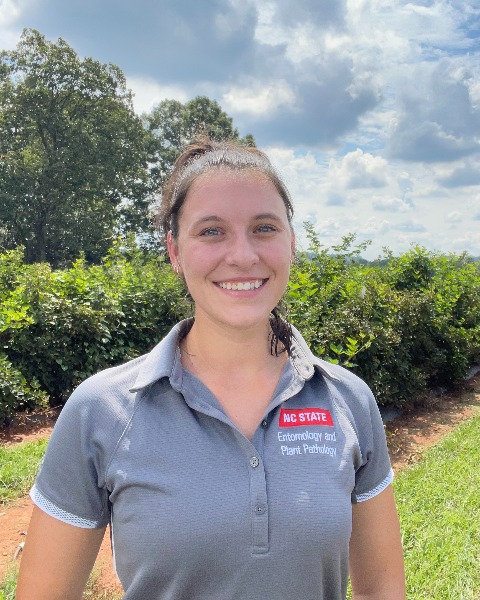Member Symposium
Systematics, Evolution, and Biodiversity
Plant-Insect Ecosystems
Biology and Conservation of Solitary, Ground-nesting Bees
Identifying and creating on-farm nesting habitat for blueberry specialist pollinators
Sunday, November 10, 2024
3:50 PM - 4:02 PM MST
Location: Phoenix Convention Center, 130, PCC

Hannah K. Levenson (she/her/hers)
Postdoctoral Research Scholar
North Carolina State University
Raleigh, North Carolina
Presenting Author(s)
In blueberry agroecosystems, wild bees augment pollination by honey bees, and could partly replace it, but wild bees are difficult to manage because they nest in the ground, often in unknown locations. To document nesting activity of wild bees on blueberry farms, we surveyed 75 randomly selected sampling points representing five land use types on five farms. We found bee nests at 31% of the sampling points, including nests of three economically important blueberry specialists: Andrena bradleyi, Habropoda laboriosa, and Colletes validus. The nesting habits of A. bradleyi were previously unknown, but this species’ nests were the most common on the focal farms. Bee nests were most likely to occur in flat areas with low organic matter in the soil, but they were not associated with a consistent land use type across all farms. To examine the feasibility of augmenting nesting habitat for wild bees, we installed a nest box on four farms. Each box was discovered by bees—sometimes while still under construction—and had at least one nest initiated in 2023. Overall we detected a remarkable and extensive amount of on-farm nesting by blueberry specialist bees. To ensure the robust contribution of these species to blueberry pollination, it may be more important to recognize and protect existing nest areas than to create new, augmented habitat.

.png)
